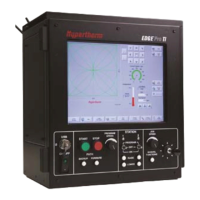Safety and Compliance xxi
Environmental Stewardship
Introduction
The Hypertherm Environmental Specification requires RoHS, WEEE and
REACH substance information to be provided by Hypertherm’s
suppliers.
Product environmental compliance does not address the indoor air
quality or environmental release of fumes by the end user. Any materials
that are cut by the end user are not provided by Hypertherm with the
product. The end user is responsible for the materials being cut as well
as for safety and air quality in the workplace. The end user must be aware
of the potential health risks of the fumes released from the materials
being cut and comply with all local regulations.
National and local environmental
regulations
National and local environmental regulations shall take precedence over
any instructions contained in this manual.
The product shall be imported, installed, operated and disposed of in
accordance with all national and local environmental regulations
applicable to the installed site.
The European Environmental regulations are discussed later in
The WEEE Directive.
The RoHS directive
Hypertherm is committed to complying with all applicable laws and
regulations, including the European Union Restriction of Hazardous
Substances (RoHS) Directive that restricts the use of hazardous
materials in electronics products. Hypertherm exceeds RoHS Directive
compliance obligations on a global basis.
Hypertherm continues to work toward the reduction of RoHS materials in
our products, which are subject to the RoHS Directive, except where it is
widely recognized that there is no feasible alternative.
Declarations of RoHS Conformity have been prepared for the current CE
versions of Hypertherm products that fall within the scope of the RoHS
Directive. These RoHS-compliant products also have a “RoHS mark”
near the “CE Marking” on the data plate. Parts and other products
manufactured by Hypertherm that are either out of scope or exempt from
RoHS are continuously being converted to RoHS compliance in
anticipation of future requirements, and there is no “RoHS mark” on their
data plates.
Proper disposal of Hypertherm products
Hypertherm plasma cutting systems, like all electronic products, may
contain materials or components, such as printed circuit boards, that
cannot be discarded with ordinary waste. It is your responsibility to
dispose of any Hypertherm product or component part in an
environmentally acceptable manner according to national and local
codes.
• In the United States, check all federal, state, and local laws.
• In the European Union, check the EU directives, national, and local
laws.
• In other countries, check national and local laws.
• Consult with legal or other compliance experts when appropriate.
A variety of options for sustainable disposal of Hypertherm products are
available on our website at www.hypertherm.com/recycle
.
The WEEE Directive
The European Parliament and the Council of the European Union
authorized Directive 2012/19/EU or WEEE (Waste Electrical and
Electronic Equipment) Recast.
As required by the legislation, any Hypertherm product covered by the
directive and sold in the EU after August 13, 2005 is marked with the
WEEE symbol. This directive encourages and sets specific criteria for
the collection, handling, and recycling of EEE waste. Consumer and
business-to-business wastes are treated differently (all Hypertherm
products are considered business-to-business). Disposal options for
Hypertherm systems can be found at www.hypertherm.com/recycle
.
The URL is printed on the symbol-only warning label for each CE version
Hypertherm plasma system since 2006. The CSA versions of products
manufactured by Hypertherm are either out of scope or exempt from
WEEE.
The REACH regulation
The REACH regulation, in force since June1, 2007, has an impact on
chemicals available to the European market. The REACH regulation
requirements for component manufacturers states that the component
shall not contain more than 0.1% by weight of the Substances of Very
High Concern (SVHC).
Component manufacturers and other downstream users, such as
Hypertherm, are obligated to obtain assurances from its suppliers that
all chemicals used in or on Hypertherm products will have a European
Chemical Agency (ECHA) registration number. To provide chemical
information as required by the REACH regulation, Hypertherm requires
suppliers to provide REACH declarations and identify any known use of
REACH SVHC. Any use of SVHC in amounts exceeding 0.1% w/w of
the parts has been eliminated.
The lubricants, sealants, coolants, adhesives, solvents, coatings and
other preparations or mixtures used by Hypertherm in, on, for, or with its
shape cutting equipment are used in very small quantities (except the
coolant) and are commercially available with multiple sources that can
and will be replaced in the event of a supplier problem associated with
REACH Registration or REACH Authorization (SVHCs).

